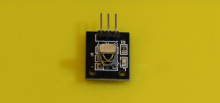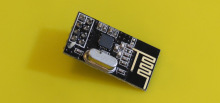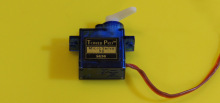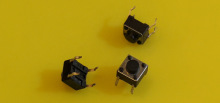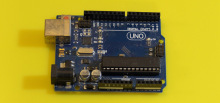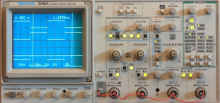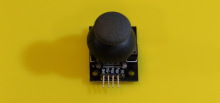Infrared receiver modules
Infrared receiver modules are commonly used in remote control systems, and sometimes for line-of-sight wireless data transmission.
For the IR receiver module pictured here, which is based on a VS1838B sensor receiving a 38 kHz carrier, we will use a library called IRremote, which includes support for several different modules and protocols.
The module has three pins, labeled `G`, `R`, and `Y`. These letters may (or may not) stand for green, red, and yellow, which happen to be sensible colors to use for the wires connecting ground, voltage, and signal pins, respectively.
Tags
- Read more about Infrared receiver modules
- Log in to post comments
